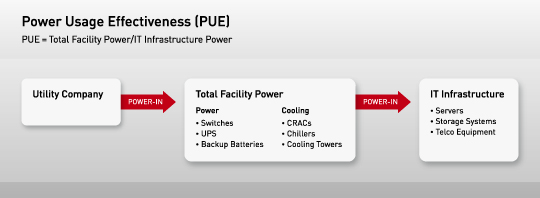In-Depth
Cutting Data Center Power Costs with Predictive Models
To be sure your green efforts are cutting power costs, IT must use the right metrics.
by Robert Neave
Given the current economic climate, cutting costs and saving money is on everyone's mind. The IT industry is not immune to these concerns, and many data center managers are looking for ways to improve the efficiency of their infrastructure and get the most for their money.
The cost of operating a data center is directly related to the cost of power. New equipment offers improvements in performance and space, but these assets require greater operational and cooling power to function. This need and the growing cost of power and the effects on global climate are challenging enterprises to operate with higher efficiency and conserve more.
Beyond improving the corporate image, going green can generate hard dollars to a company's bottom line and free up operating budgets to address the need for new equipment and applications. This new reality was reiterated in a recent study by analyst firm Gartner Group, touting "green IT" as one of the "top ten strategic initiatives" a company should consider in 2009.
Before a company begins the process of getting "greener," it is paramount that current power consumption rates are measured to accurately establish a benchmark for efficiency. With enterprises of all sizes investing in eco-friendly technology, the demand for tools that accurately measure the effects of green initiatives is set to skyrocket this year, as managers and executives attempt to show true ROI and validate their efforts.
The biggest mistake a company can make is not using a consistent baseline for data. That said, simply taking the manufacturer's power consumption figures for servers and other equipment is a mistake. Vendor estimates have a significant protection margin added to their published power consumption figures, and will significantly skew any end-user measurement. Accurate measurement software solutions will have de-rated values for specific equipment, which provides a more true-to-life measurement of power consumption.
Power usage effectiveness (PUE) is a metric that is often used to measure the efficiency of the data center's power usage before and after green initiatives have been implemented. PUE can be calculated by taking the total power consumed by a data center facility and dividing it by the power consumed by the IT equipment. The resulting ratio provides the effective power overhead for a unit of IT load. For example, a PUE value of 2.0 means that for every watt used to power IT equipment, an additional watt is required to deliver the power and keep the equipment cool.
The data needed to calculate the total facility power usage can be obtained by reading the power meters serving the facility or through its building management system (BMS). Many device manufacturers provide software applications that can monitor the power consumption and others support standard protocols (SNMP) and various data collection methods for passing metrics to third-party applications.
The other required variable needed to complete the PUE calculation is the total power used by the IT infrastructure. The IT Infrastructure devices included in this calculation include:
- Servers
- Telco Equipment
- Storage Systems
Obtaining the power consumption values for these devices can be easily done with data center management tools such as GDCM's nlyte -- again, the consumption values published by the hardware vendor are not accurate enough for this type of measurement.
If an organization has limited measurement tools, the IT department can work together with the facilities management team to attribute how much power is consumed by the data center. If this figure isn't available from one central tool, it may need to be aggregated from the values in a number of points throughout the power infrastructure.

Figure 1
Although PUE is an excellent metric for measuring the data center's efficiency over time, PUE proponents such as Microsoft and The Green Grid suggest that you make changes to the data center and then use these metrics as your indicators of whether things are getting better or worse. A more effective approach to this "change and hope" strategy for improving power efficiency is one that utilizes extensive modeling to assess the impact of these changes on power consumption, cooling, and space before the change is made, not after the fact. PUE modeling (PUEM) is a core component of the technologies required to ensure a successful implementation of green initiatives inside the data center.
At GDCM, we use PUEM to measure the effects of changes in the pursuit of energy efficiency. Using a tool designed specifically for this function makes the measurement process easier and provides a repeatable process for measuring future values and tracking improvements. By modeling the effects to key metrics before spending money and manpower to implement these changes, data center managers will have a powerful way to justify their efforts to reduce power consumption. Without modeling, you are only guessing if the expensive changes will actually reduce the PUE value for your data center.
Using PUE to measure the effectiveness of data center power usage in terms of the computing power it contains allows you to see how optimizing space, power, and cooling can save money while reducing your carbon footprint. Using data center management software further extends these savings by modeling these changes virtually to measure their effect on PUE. It's simply a better way to go green and avoid going into the red.
Robert Neave is the chief technology officer of GDCM, Inc. You can reach the author at [email protected]